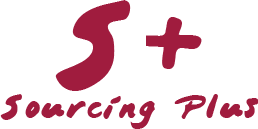CPO questions
- Do I need to be better than last year or better than my competitors?
- Am I organized properly? How do I staff, train, develop, measure, promote?
- Should I measure the quality of the relation with my suppliers? How? Then what?
- How to change culture? How can my team become proactive problem solvers rather than reactive specification finders. How to develop their "Purchasing Leadership, and increase their footprint?
- How to integrate acquisitions or merger to capitalize on increased purchasing power without loosing the benefits of established relationships?
- Do we need to look beyond traditional ethics issues: What is the right thing to do in developing non traditional suppliers?
To answer those effectively, the CPO needs new skills in its staff, blending the knowledge of tools necessary for category management, and competencies to lead project, influence others, and deliver transformation
Organizational Skills to Influence beyond Hierarchy
Much focus in skill development for purchasing is on technical tools. The basics centers around negotiation. More sophisticated training programs focus on "Category Management" and "Supplier Relations Management". But is it sufficient?
To obtain its full impact the purchasing professionnal must also develop organizational skills
- to deal with internal clients
- to influence key suppliers, especially those that contribute to innovation and should have objective aligned with their prefered client
The procurement function most mature status requires its leaders to deploy a balanced skill set, blending technical and organizational skills. At each level of the Supplier Management contribution Matrix corresponds a stage in maturity

Thos skills are derived from the works of Covey on leadership, and the grounded observations of Jean-Louis Viargues, (Kedge, HEC) expert in team relationships.
- Listen to understand the stakeholders
- Be creative and assertive to leverage technical skills and develop solutions
- Engage all stakeholders to convince effectively
- Become an effective change manager to deliver the identified benefits
Those elements become natural components in the development of category management to move beyond the tools of continuous operational improvements that draw companies towards imitation and homogeneity, not performance differences.

